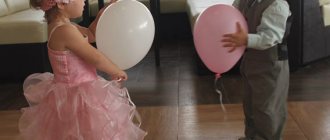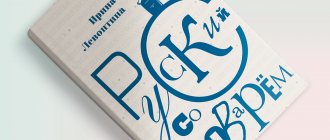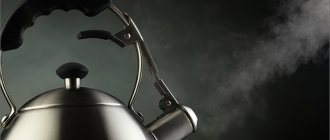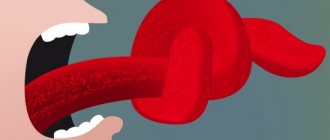What it is
Diction is one of the characteristics of speech, meaning the correct and clear pronunciation of all sounds. A person must clearly pronounce all sounds even in the most difficult words. In addition, for good diction you need to have an expressive voice so that others can clearly hear the speaker.
An important component of correct diction is the ability to use intonation. Such people are pleasant to listen to, they are good storytellers because they can convey the mood of the characters. The pace of speech should be such that others can understand what the person is talking about.
Signs of diction problems
When an adult has a diction disorder, it is immediately noticeable by the following signs:
- difficulties in pronouncing one or more sounds (replacement, distortion or absence);
- too fast a pace of speech, at which others do not understand the speaker;
- slow speech that is difficult for people to understand;
- unclear pronunciation of word endings;
- weak quiet voice or too loud;
- difficulties in using intonation.
When diction is impaired, speech becomes blurred, unclear, and inexpressive. It is difficult for others to perceive her. Therefore, sometimes they even have to ask again, which causes some discomfort in the speaker. Adults with such peculiarities of diction are embarrassed by their speech, and turn to a specialist for help or enroll in “Beautiful Speech” courses.
Form of mimetic muscles
The mimetic muscles are trained by speech therapists to determine the physical rights of the following:
- To the right1 raise your eyebrows up;
- To the right 2 frown;
- To the right 3 close your eyes;
- To the right 4 inflate the cheeks;
- To the right 5 retract your cheeks.
At the hour of death, it is necessary for children to gain respect for speech therapy:
- na obsyag rukhіv (povny or nepovny);
- for activity, galvanization or galvanization of rokhs;
- for muscle tone (normal, increases or decreases);
- to the tempo of the Vikonannya rukhiv (normal, swidky, povilny);
- to replace one hand with another;
Types and causes of diction disorders
They are separated into a separate block of classification of speech disorders:
- Voice formation disorders: aphonia (a person speaks only in a whisper), dysphonia (voice production disorders and control of its pitch).
- Violations of the tempo-rhythmic side (tachylalia - too fast speech rate, bradylalia - slow speech).
- Stuttering - a person has developed the means to formulate a statement, but due to convulsions in the speech apparatus, hesitations occur in speech.
Additionally, unclear, slurred speech may be a sign of more complex speech disorders:
- dysarthria;
- aphasia.
If an adult only has problems with diction, a speech therapist will select exercises to correct it. But if this is part of the symptomatology of more complex speech disorders, the teacher prepares corrective work to overcome this speech defect, and not only focuses on correcting diction.
The etiology of unclear speech varies. It can be caused by both biological factors and social and psychological reasons.
Biological:
- anatomical features of the speech apparatus;
- disturbances in articulatory motor skills;
- head injuries;
- organic damage to the central nervous system;
- underdevelopment of the speech centers of the cerebral cortex.
Social:
- a person’s surroundings include people with incorrect diction;
- incorrect speech environment.
Psychological factors include a person’s lack of self-confidence and fear of public speaking. It happens that when communicating with loved ones there are no difficulties, but when speaking to a wide audience, the speaker experiences anxiety, which causes a violation of diction. Or hesitations in speech can occur in closed, uncommunicative people. Therefore, a speech therapist must conduct a diagnosis to determine the exact cause of the disorder and select appropriate corrective exercises.
Article:
A person is not born with the ability to speak, much less do it correctly and clearly. If a child has problems pronouncing certain sounds, articulation gymnastics can help him. This is a set of exercises aimed at correcting these difficulties. In what cases is it sufficient, and when is a more serious approach required? What articulatory gymnastics exercises can you do at home yourself? What is articulatory gymnastics
Children in the first years of life very often distort sounds that are difficult to pronounce, because their speech organs are still developing. There are practically no children who speak perfectly clearly right away.
For clear pronunciation of sounds, correct articulatory motor skills are necessary, that is, coordinated activity of the organs of the speech apparatus. If there are any problems in articulatory motor skills, they will always be reflected in sound pronunciation.
When speaking, we use about a hundred muscles, including the muscles of the neck, chest, face, tongue, and soft palate. To control all these muscles, many more neurons are used than when walking and running. Articulatory gymnastics is aimed at those organs that have muscles: tongue, lips (orbicularis oris muscle), facial muscles. But first of all it is intended for the language. The tongue is the main organ of speech, and developing and strengthening its muscles will help you pronounce all sounds more accurately and clearly.
Types of articulatory gymnastics
Such gymnastics can be active and passive. Most often, when talking about articulatory gymnastics, they mean its active form : the one that the child performs himself. It is suitable in cases where articulatory motor skills are not impaired, but simply need to be improved and practiced individual movements.
But there are also more serious situations, such as dysarthria, when the pronunciation aspect of speech is impaired as a result of damage to the nervous system, and the mobility of the speech organs is limited. In this case, it is extremely difficult or impossible for children to perform such gymnastics on their own. After all, their speech organs are not ready for this.
Passive gymnastics is used here an adult, with his own hands or with the help of devices - probes, spatulas, brushes, performs the movements and poses that we would like to achieve. For example, very often children with motor disorders cannot lift their tongue upward. Naturally, in this case they cannot clearly pronounce the sounds that require this movement. And this problem is unlikely to disappear on its own; serious work is needed on this.
I would also like to dwell on such a problem as a short hyoid frenulum. This may also be the cause of limited tongue mobility. It can be stretched a little through exercise, but if it is too short, then to normalize sound pronunciation all that remains is to trim it.
What kind of gymnastics does your child need?
Do this test: ask your child to stick out his tongue. Look out for the following signs:
- the child cannot stick out and fixate his tongue when asked,
- can stick it out only partially and quickly pulls it back in,
- cannot lift it up or swing it from side to side,
- when the tongue rises upward, the lower jaw rises with it,
- the protruding tongue begins to tremble or deviate to the side,
- there is profuse salivation,
- the child does not clearly pronounce several groups of sounds at once (hissing, whistling, sonorous),
- the pronunciation of not only consonants, but also vowels is impaired (the pronunciation is averaged, there is no clear difference between the sounds).
If several of the listed signs are observed, then most likely the child, in addition to consulting a specialist, needs passive gymnastics and speech therapy massage. Together, they will prepare the baby’s speech apparatus for active articulatory gymnastics and make it possible to produce sounds.
It is better to learn about passive gymnastics techniques from a speech therapist during a consultation. The fact is that disorders can be different; there are no universal exercises that would suit everyone. Only a specialist can explain which techniques will be most effective in each case.
General principles of articulation gymnastics
Regularity. This means that daily five-minute exercises will be more beneficial than an hour of gymnastics once a week.
Game form . Articulation gymnastics can be not only useful, but also a fun activity for your baby.
Visibility. The more analyzers (vision, hearing, touch) are connected when performing exercises, the more effective the gymnastics. How to achieve visibility? You can use a mirror in which the child will see his reflection. The adult himself, sitting opposite the baby, can act as a model for performing movements. Use pictures, videos of other children doing this gymnastics. Find out through experience what suits your child best and what motivates him more.
Convenience. Gymnastics should be done in a comfortable position: the back is relaxed, the arms lie calmly, the head has support. The child should be comfortable.
Gradual complication. Try the easiest exercises first, gradually increasing the difficulty. Each time introduce no more than one new exercise, and only if all the previous ones have already been well worked out.
Expediency . If a child copes with all the exercises very easily, it is worth considering whether he needs this gymnastics at all. After all, the main goal of these exercises is to learn how to do something that you are not yet very good at.
The right attitude. It should not be viewed as a panacea; it is just one method.
Gymnastics techniques
You can easily master these active gymnastics exercises, aimed at statics or dynamics, yourself. Each pose is held for 5-7 seconds and repeated several times.
"Pipe". The lips need to be folded into a tube and pulled forward as much as possible.
"Fence". We explain that you need to smile so as to show your teeth.
Alternating exercises “Pipe” and “Fence”.
"Rabbit". You need to lift your upper lip to open your incisors.
"Evil horse" You need to imitate the snorting of a horse. Exhale forcefully through your mouth without opening it. At the same time, the lips will begin to vibrate.
"Piglet." You need to stretch out your lips with a tube, and then use closed lips to rotate them in a circle in different directions.
"Horse". The child should click his tongue, voicing the clatter of hooves.
"Fungus". The tongue is firmly applied (sucked to the palate) and held in this position.
"Harmonic". Holding your tongue in the “mushroom” position, you need to open/close your mouth several times.
"Burst the balloon." The cheeks are puffed out, then the child must lightly hit them to force the air out.
"Hamster". First, both cheeks are inflated, then the right and left ones alternately.
"Fish" The cheeks are drawn in and held in this position.
"Spatula". The relaxed tongue should be placed on the lower lip (without sticking out).
"Needle". The narrow tongue protrudes as far as possible.
"Watch." Open your mouth slightly and alternately touch the left and right corners of your mouth with the tip of your tongue.
"Cup". With your mouth wide open, you need to keep your tongue up.
"Focus". Raise your tongue to the “cup” position and gently blow on the tip of your nose. You can put a piece of cotton wool on the tip of your nose.
"Delicious jam." Use your wide tongue to lick your upper lip (you can lick real jam).
"Painter". We run our tongue across the palate in the direction from front to back (from teeth to throat). You can tell your child that the tongue is a paint brush that paints the sky.
“Brushing our teeth.” The tip of the tongue needs to be drawn along the upper and then along the lower teeth from one edge to the other.
"Monkey." Open your mouth slightly and place your tongue between your lower lip and lower teeth. The lips are brought together.
"Bulldog". From the “monkey” position, move your tongue to a position between the upper lip and upper teeth. Lips close.
"Circle". Mouth closed. The tongue moves from the inside, smoothly outlining a circle with the tip of the tongue.
"Sail". The end of the tongue rests on the upper teeth and is held in this position.
"Swing". The mouth opens and the tongue alternately rises up and down.
"Drummer". Smile, open your mouth, place your tongue behind your upper teeth, repeat loudly, clearly, repeatedly: “D-D-D-.” Gradually speed up the pace, do not bring your teeth closer together.
“Kneading the dough.” The tongue rests on the lower lip (as in the “scapula”), while the mouth opens and closes, the lips slap the tongue.
“Let’s bite the tongue.” Smile, open your mouth slightly, bite the tip and... You need to close your mouth tightly, using the tip of your tongue to press on one or the other cheek from the inside.
"Turkey" ("Chatterbox"). Smile, show your teeth, open your mouth slightly, put your wide tongue on your upper lip and make quick movements with the tip of your tongue along the upper lip back and forth, trying not to lift your tongue from the upper lip.
"The steamer is humming." When smiling, you need to bite your tongue and say “y” for a long time.
Do these exercises regularly, but without making them a chore for your child, and you will definitely see progress! And don’t forget about other speech development techniques.
Features of speech therapy diagnostics
The specialist always examines all components of speech development. To assess the state of diction, he pays attention to the following components:
- strength and pitch of voice;
- mastery of intonation;
- rate of speech;
- sound pronunciation;
- articulatory motor skills;
- strength and duration of exhalation.
The speech therapist first looks at the anatomical features of the articulation organs, because this may be one of the causes of diction disorders. Also offers to complete tasks on statics and dynamics.
Next, he examines the sound pronunciation of all phonemes. You need to pronounce them in isolation, in syllables and words. The diagnosis also includes an examination of the syllable structure, during which the speech therapist evaluates how clearly a person pronounces the sounds in a word (even with a combination of consonants).
To assess the tempo-rhythmic side, tasks for reading phrases with different intonation and pitch of the voice are used. A person pronounces tongue twisters and tongue twisters, which help evaluate the clarity of words. The speech therapist also evaluates the pace of a person’s normal speech.
Also during diagnosis, the specialist checks the formation of speech breathing, the strength and duration of exhalation. To do this, he asks to “sing” the vowels as long as possible and play wind instruments.
The specialist must talk with the person to find out about his speech history in childhood, to more accurately determine the causes of diction disorders and possible speech disorders. Based on the diagnostic results, the speech therapist selects the necessary exercises.
Budova articulatory apparatus
During the investigation, the work of the organs of the articulatory apparatus remains important. Speech therapists from the online speech therapy service have selected a range of rights to identify anomalies that cause speech defects:
Restore respect to such parts of the body
lips : thick, thin; gap, scars;
teeth: sparse, crooked, chipped, with a slit arch, absence of slit teeth;
bite: prognathia, progenia, open lateral, open anterior;
firmer palate: high, narrow, gothic, flat, short, cleft, submucosal cleft;
the flesh of the palate: shortened, bifurcated, the absence of a small tongue;
tongue : massive, geographical, small, with a shortened sublingual ligament.
Breathing exercises
One of the reasons for disturbances in the tempo of speech, and therefore diction in an adult, is unformed speech breathing. Each lesson begins with breathing exercises:
- Inhaling, slowly lean forward. The back should be straight. Next, straighten up. As you exhale, pronounce the word “GIM”, singing the vowel, and walk in place.
- Mouth open, inhale through your nose. Exhale slowly through your mouth.
- This exercise is aimed at developing diaphragmatic breathing. Starting position: feet shoulder-width apart, one hand on the chest, the other on the stomach. Breathe slowly, calmly, while rounding your stomach and keeping your chest still.
Breathing exercises can be combined with training the strength and pitch of your voice.
- You need to take as deep a breath as possible with your mouth. As you exhale, pronounce vowel sounds, trying to stretch them out as long as possible. You should have smooth transitions between vowels. Every sound should sound loud and clear.
- While performing this task, your mouth must be closed. Take as deep a breath as possible through your nose. As you exhale, “moo,” stretching the M as long as possible. Its sound should be as loud as possible.
- You can sing vowels not only loudly, but also quietly. Make the task more difficult by gradually lowering and raising the pitch of your voice.
These tasks will help an adult form speech breathing and learn to control the height and strength of his voice.
Speech therapy quilting of the looseness of the lower cleft and the position of the lingual frenulum
Right for speech therapy quilting of the looseness of the child’s lower slit:
- At the hour of unfastening, swing the lower slit forward, right-handed, left-handed;
- open your mouth wide, close your mouth;
- hang the lower slit forward, then pull it back;
Straighten the child’s lingual frenulum for speech therapy:
- touch the tip of your tongue to the edge of your upper lip;
- touch the tip of your tongue to the edge of your lower lip;
- try to reach the tip of your tongue to your nose
Articulation gymnastics
If an adult has formed the pronunciation of all phonemes, but it is unclear, the cause may be insufficient articulatory motor skills. Therefore, it is imperative to include basic exercises for the organs of articulation in your classes.
For lips:
- "Smile";
- “Tube” (lips pulled forward);
- “Window” (lips are pulled forward a little so that a window is formed).
For the lower jaw:
- raising-lowering;
- movement from side to side.
For language:
- make it alternately wide and narrow;
- raise-lower;
- move from side to side;
- "Cup";
- “Jam” - stroking the upper and lower lips;
- "Horse".
Articulation gymnastics should be done in front of a mirror so that an adult can evaluate the correctness of the exercise.
Stage of articulatory motor skills
When speech therapy is applied to the articulatory motor system, speech therapy rights are applied to check the looseness of the lips, the tongue, the soft palate, as well as the looseness of the lower cleft and the lingual frenulum.
Speech therapy adjustments to relieve loose lips:
Right:
- The lady stretches her lips in a smile and puffs her pipe;
- The child places her upper lip on her lower lip and crosses it;
- tap out why with your lips: to the right “Smishka” - “Pipe” (under the rakhunok): up to 5 rocks - 3 times;
- Vikonati speech therapy right “Proboscis”, “Varenichok”, “Easy” etc.
During speech therapy training, increase your respect for:
- the presence and absence of children's ruins;
- tone (normal, weak, tense);
- tempo of flows (normal, fast, slow);
- switching from one direction to another;
- method of children's hands (high, low);
- Viconnian accuracy;
- trivalism (the ability to trim lips in a given position);
- replace rukhiv;
- synkinesis.
Speech therapy remedies to tighten the looseness of the tongue:
Right:
- wide - narrow (under the rakhunok): 3 times - up to 5 rocks, 5 times - up to 7 rocks);
- lift the tip of the tongue, lower it;
- place the wide tongue on the upper lip - on the lower lip, right "Pendulum" - "Goydalki";
- click your tongue on the palate - right “Konik”;
- stick out the tongue of the right and left side of the mouth - to the right "Tick-tock";
- raise your tongue up to the palate, and then push it down to the lower teeth - to the right “Mushroom”;
- twisting the tongue forward with the little head - to the right “Golochka”;
At the hour of speech therapy, increase your respect for:
- the visibility and presence of ruins;
- tone;
- pace of children's roars;
- switching from one direction to another;
- the character of the children's hands;
- accuracy of speech therapy rights during fastening;
- change the rulers;
- triviality;
- synkinesis;
- presence of tremor, salivation, weakening of the tip of the tongue.
Speech therapy for the soft and hard palate:
Right for speech therapy quilting of the soft and hard palate.
- cough with an open mouth (tongue on the lower lip);
- vimovite sound - [a], if the mouth is wide open;
At the hour of speech therapy, the child develops respect for:
- the presence of post-operative gaps;
- nasal polyps, adenoids;
- swelling of nasal discharge;
- deviated nasal septum;
- growth of the soft palate with arches, tonsils from the posterior wall of the pharynx;
- increased pharyngeal azygous tonsils;
Recommendations for correcting diction
To practice clear pronunciation, tongue twisters are used. You need to start working with them at a slow pace, gradually speeding it up. All sounds must be pronounced clearly, and others must understand what the person is talking about, even at a fast pace of speech. Therefore, it is best to invite someone to classes who could evaluate the progress. For greater psychological comfort, this could be one of your relatives or friends.
To make speech expressive, adults can help by reading their favorite poems. When reading them, you need to focus your voice on the most important words. Using their example, a person will learn to use intonation to convey the meaning of the work to others.
Adults can benefit from practicing their public speaking skills. This could be performances in a theater group or making toasts. If diction disorders are combined with psychological problems, then you should practice while listening to relaxing music or go swimming. And speak publicly in front of a small number of people.
You must complete all tasks in front of a mirror. An adult must not only speak expressively, but also use nonverbal means - facial expressions and gestures. Then the speech will not only be understandable and beautiful, but also effective.











